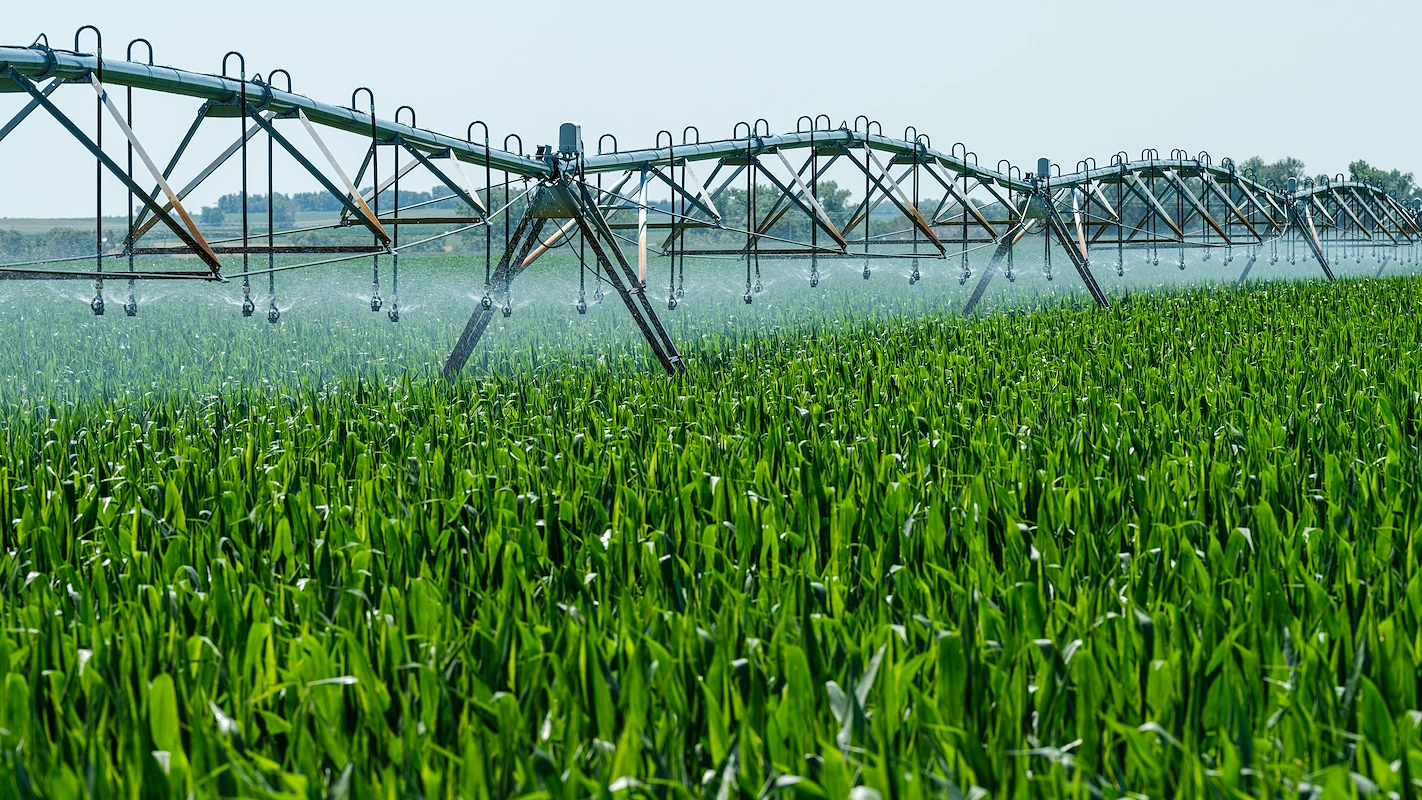Starting a fast food business is an exciting venture that combines culinary passion and customer service skills with sharp business savvy. The industry pulls in hundreds of billions of dollars annually, fueled by a steady demand for quick, convenient meals from everyone from busy families to students and late-night crowds.
This guide will take you through the practical steps of validating your concept, securing funding, selecting the right location, and navigating permits to help you launch a successful fast food business in the U.S.
Step 1: Validate your concept and map out your finances
Before you invest a dollar, confirm people want your food. You might set up a pop-up or a booth at a local food festival. This real-world feedback is more valuable than surveys. Also, use Google Trends to see what food concepts are popular in your specific city.
Next, size up the competition. Use Google Maps to find every restaurant within a one-mile radius. A frequent mistake is to only look at other fast food spots, but that local pizza place or cafe is also your competition. Visit them during lunch and dinner rushes to observe their customer flow.
Break down your startup costs
Your initial investment will fluctuate based on location and scale. A detailed budget is your roadmap. Many new owners forget to budget for at least six months of operating expenses, which can create a tight spot before they build momentum.
Here is a typical cost breakdown to get you started:
- Kitchen Equipment: $20,000 - $150,000 for essentials like fryers, grills, and refrigeration.
- Lease and Renovation: $15,000 - $100,000, including a security deposit and any needed construction.
- Licenses and Permits: $500 - $5,000 for health permits, business licenses, and food handler cards.
- Initial Inventory: $5,000 - $15,000 for your first few weeks of food and paper supplies.
Here are 3 immediate steps to take:
- Use Google Trends to compare search interest for two different menu ideas in your target zip code.
- Visit three local competitors, noting their prices, speed of service, and busiest times.
- Create a spreadsheet to budget for major startup costs like equipment and your first month's rent.
Step 2: Set up your legal structure and get licensed
Most new owners form a Limited Liability Company (LLC). It protects your personal assets if the business faces debt or lawsuits. Profits pass through to your personal taxes, which avoids the double taxation you would see with a C Corporation.
Once your LLC is registered with the state, get an Employer Identification Number (EIN) from the IRS. It is your business's federal tax ID, and you need it to open a bank account and hire employees. The application is free on the IRS website.
Navigate your permits and licenses
Your city or county health department is your next stop. You will need a food service license, which can cost between $100 and $1,000. Many people underestimate the timeline here; start this process 90 days before you plan to open, as it involves multiple inspections.
In addition, you will need a general business license from your city, and all staff must have a food handler’s permit. These permits typically cost under $20 per person. If you plan to have an outdoor sign, you will also need a sign permit.
Here are 4 immediate steps to take:
- Register your business as an LLC with your Secretary of State's office.
- Apply for a free Employer Identification Number (EIN) on the IRS website.
- Contact your local health department to request the food service license application packet.
- Research your city's requirements for a general business license and sign permit.
Step 3: Secure your insurance and manage risk
Choose the right insurance policies
You will need a general liability policy, which typically costs between $1,200 and $5,000 annually for $1 million in coverage. Make sure this includes product liability. Some owners forget this, but it protects you if a customer claims they got sick from your food.
Commercial property insurance protects your building and equipment from events like fire or theft. Workers’ compensation is legally required once you hire your first employee. It covers medical bills and lost wages from on-the-job injuries, a frequent occurrence in kitchens.
Instead of a general agent, you might want to contact a specialist. Providers like The Hartford, Insureon, and the Food Liability Insurance Program (FLIP) understand restaurant risks. They can bundle policies into a Business Owner's Policy (BOP) which often saves money.
Understand your unique risks
Fast food kitchens have specific hazards. Grease fires are a constant threat, and wet floors create slip-and-fall risks for both staff and customers. Proper training and clear procedures are your first line of defense, but insurance is the necessary backstop for when accidents happen.
Here are 4 immediate steps to take:
- Request quotes for a $1 million general liability policy from three different providers.
- Confirm with each provider that product liability coverage is included in their quote.
- Contact a restaurant insurance specialist like The Hartford or FLIP to ask about a Business Owner's Policy.
- List your major equipment with estimated replacement costs for your commercial property insurance application.
Step 4: Choose your location and buy equipment
A typical fast food restaurant needs 1,500 to 2,500 square feet. On your city’s planning department website, look for properties zoned for commercial use, often labeled C-1 or C-2. Prioritize spots with high visibility and foot traffic near busy intersections or shopping centers.
When you negotiate your lease, ask for a Tenant Improvement (TI) allowance. This is money from the landlord to help pay for your build-out. Many new owners sign a five-year lease without an early termination clause, a costly mistake if the location underperforms.
Stock your kitchen
You can save significantly by purchasing used equipment from restaurant auction sites. A new commercial fryer might cost $1,500, but a used one could be half that. A flat-top grill runs from $2,000 to $5,000. You will also need a three-compartment sink and commercial refrigeration.
For your initial inventory, check out suppliers. Restaurant Depot requires a free membership but has no minimum order, which is perfect when you start. Larger distributors like Sysco or US Foods may require a minimum weekly spend of $500 or more.
Here are 4 immediate steps to take:
- Research three potential locations and check their zoning classification on your city's planning department website.
- Ask a commercial real estate agent about typical Tenant Improvement (TI) allowances in your target area.
- Compare prices for a commercial fryer and grill from both new and used equipment suppliers.
- Sign up for a free membership at Restaurant Depot to browse inventory and pricing.
Step 5: Set up your payment system
Your customers expect to pay quickly. You will need a system that accepts credit, debit, and digital wallets like Apple Pay. Look for low transaction fees and reliability, as any downtime means lost sales.
For fast food businesses that need to accept payments on-site or on-the-go, JIM offers a streamlined solution. With JIM, you can accept debit, credit and digital wallets directly through your smartphone - just tap and done.
At just 1.99% per transaction with no hidden costs or extra hardware needed, it's particularly useful for food trucks or for taking orders in a long line. Many processors charge 2.5% to 3.5% plus other fees, so the savings add up.
Getting started is straightforward:
- Get Started: Download the JIM app for iOS.
- Make a Sale: Type the sales amount, hit sell, and ask your customer to tap their card or device on your phone.
- Access Funds: Your money is available right on your JIM card as soon as the sale is done - no waiting for bank transfers.
Here are 3 immediate steps to take:
- Calculate your estimated monthly revenue to compare transaction fees from different payment solutions.
- Decide if you need a mobile payment option for a food truck, pop-up, or line-busting.
- Download the JIM app to see how the interface works on your phone.
Step 6: Secure funding and manage your finances
Find the right funding source
The SBA 7(a) loan is a popular choice for new restaurants. Lenders typically look for a credit score of 680 or higher. You can often secure between $50,000 and $350,000, with interest rates around the Prime rate plus 2.75% to 4.75%.
If your credit history is not perfect, equipment financing is another path. Because the equipment itself acts as collateral, these loans can be easier to obtain. The interest rates are higher, usually between 8% and 20%, but it gets the gear in your kitchen.
Plan your working capital
Many new owners focus entirely on startup costs and run out of cash. You need a buffer. Plan to have enough working capital to cover at least six months of operating expenses, including rent, payroll, and inventory, before you expect to turn a profit.
For a small fast food spot, this means having $50,000 to $100,000 in the bank on day one. Also, look into grants from the National Restaurant Association Educational Foundation. They are competitive but worth the application if you qualify.
Here are 3 immediate steps to take:
- Check the SBA website for current 7(a) loan requirements to see if you qualify.
- Calculate six months of your estimated operating expenses to set a working capital goal.
- Get a quote for equipment financing to compare its costs against a traditional loan.
Step 7: Hire your team and set up operations
You will likely need two primary roles: cooks and cashiers, who typically earn $15 to $18 per hour. Many owners try to manage every shift themselves at first, but this leads to burnout. Consider hiring a reliable shift lead early on for around $20 to $25 per hour.
All employees must have a food handler’s permit. For your shift lead or manager, you might want to get them ServSafe certified. This program covers advanced food safety and is a standard in the restaurant industry, which can help lower your insurance premiums.
Streamline your daily workflow
To manage schedules and control labor costs, look into software like 7shifts or Homebase. These platforms help you build schedules, track hours, and communicate with your team from an app. They prevent over-staffing, which can quickly eat into your profits.
Speaking of costs, aim to keep your total labor expenses between 25% and 35% of your revenue. This is a standard benchmark for fast food businesses. Using scheduling software makes it much easier to stay within that target range as you adjust to sales volume.
Here are 4 immediate steps to take:
- Draft job descriptions for a cook and a shift lead, including pay ranges.
- Research ServSafe manager certification courses and costs in your area.
- Explore the features of scheduling software like 7shifts or Homebase.
- Set a target labor cost percentage for your first six months of operation.
Step 8: Launch your marketing and attract customers
Build your local presence
Your first customers will come from your neighborhood. A grand opening event with a simple offer, like a free drink with any purchase, can create initial buzz. Also, consider partnering with nearby offices for a lunch discount program. Many owners overlook this and miss out on consistent weekday traffic.
Print 1,000 high-quality flyers with a compelling offer and distribute them in the surrounding blocks. A 1-2% redemption rate is a solid return. Focus your message on one signature item to avoid overwhelming potential customers with too much information.
Use digital ads to reach new people
Claim your Google Business Profile immediately. It is free and puts you on the map. Encourage your first few happy customers to leave reviews. For paid ads, start with a small budget of $15-$20 per day on Facebook or Instagram, targeting users within a two-mile radius.
Your ad is only as good as your food photography. You do not need a professional photographer at first. A clear photo taken on a smartphone in good lighting works well. A common mistake is running ads with dark, unappetizing pictures, which wastes your budget.
Here are 4 immediate steps to take:
- Claim and fully complete your Google Business Profile with hours, menu, and photos.
- Design a grand opening flyer with a single, clear offer.
- Contact two local businesses or office buildings to propose a partnership.
- Set up a Facebook ad campaign with a $15 daily budget targeting your local zip code.
Step 9: Set your menu prices and manage costs
Your menu prices directly impact your profitability. The goal for most fast food spots is to keep the food cost percentage between 28% and 35%. This means the ingredients for an item should cost no more than 35% of its menu price.
Calculate your cost per item
To set a price, you must know the exact cost of every ingredient in a dish. For example, if a burger’s ingredients cost you $2.50, you can use a cost-plus pricing model. A common approach is to multiply your food cost by three, which would price the burger at $7.50.
Many new owners make the mistake of just copying a competitor's prices. You do not know their ingredient costs, rent, or labor expenses. Always base your prices on your own numbers first, then adjust based on what the local market will accept.
Engineer your menu for profit
Once you set prices, analyze your menu. You can categorize items into stars (high profit, high popularity) and puzzles (high profit, low popularity). Promote your stars heavily. For puzzles, you might try a special or a combo meal to see if you can increase their sales.
Here are 4 immediate steps to take:
- Calculate the exact ingredient cost for your signature menu item.
- Use a 3.5x markup to set an initial price for that item.
- Compare your price to three direct competitors to see if it is competitive.
- Set a target overall food cost percentage for your restaurant, aiming for under 35%.
Step 10: Maintain quality and scale your business
Establish your quality standards
Consistency is what brings customers back. Document every recipe with exact measurements and procedures. Aim for an order accuracy rate of 99% or higher and keep ticket times under five minutes during peak hours. Use these metrics to train your team and evaluate performance daily.
Many owners get excited by early success and rush to expand. Before you do, create a detailed operations manual. This playbook should cover everything from food prep to customer service scripts. It ensures your second location runs just as smoothly as your first.
Know when to grow
Growth should be data-driven, not based on a gut feeling. A good benchmark to consider expansion is after you have achieved 12 consecutive months of profitability. You should also have a net profit margin of at least 15% and enough cash to cover the new location’s startup costs.
Once you are ready to scale, inventory and sales management software becomes very helpful. Systems like Toast or Square for Restaurants can manage multiple locations from one dashboard. They track sales data, inventory levels, and labor costs to give you a clear picture of your entire operation.
Here are 4 immediate steps to take:
- Create a recipe card for your top-selling item with exact measurements and photos.
- Start tracking your average ticket time and order accuracy for one week.
- Draft a one-page operations summary that a new hire could follow.
- Research the features of an all-in-one restaurant management system like Toast.
You now have a roadmap to launch your fast food business. In this industry, consistency is your currency. If you can deliver the same great experience every time, you will build a loyal following. The path is clear, so take that first step.
And when you open your doors, a simple payment process helps. JIM lets you accept cards and digital wallets right on your smartphone, with no extra hardware and a flat 1.99% fee. Download JIM to be ready for your first sale.















